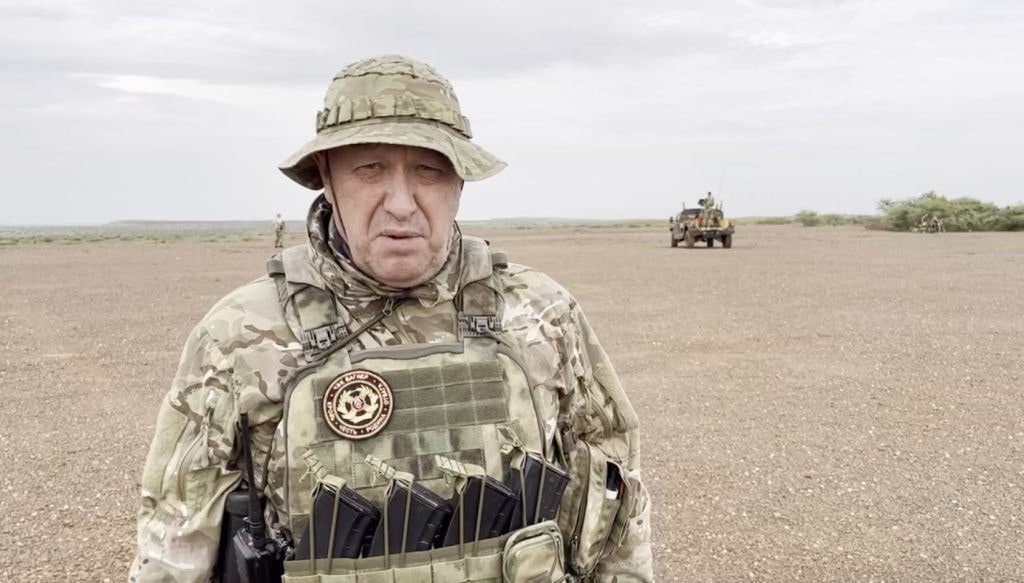Early reports from a Wagner Group social media post and unconfirmed statements from the Russian state news service TASS announced that the founder of the private military company, Yevgeny Prigozhin, was aboard a private jet that crashed north of Moscow. The Embraer twin-engine corporate aircraft was en route to St. Petersburg from Moscow. News accounts said Prigozhin was one of the seven passengers and three crew killed.
“If confirmed, no one should be surprised. The disastrous war in Ukraine led to a private army marching on Moscow, and now (it comes) — it would seem –- to this,” National Security Council spokeswoman Adrienne Watson declared. During a short-lived coup against the Kremlin in June, the private army leader actively fought against regular Russian forces, downing six Russian helicopters and an IL-22 airborne command and control aircraft with 13 on board. Though the crash was described initially as an accident, Wagner’s leader, labeled as a dissident after his failed June rebellion, was definitely persona non grata to Russian President Vladimir Putin.
Prigozhin on Doomed Flight?
Putting a sinister twist on the story, “Wagner-linked Telegram channel Grey Zone reported the Embraer aircraft was shot down by air defenses in the Tver region, north of Moscow … Grey Zone said local residents heard two bangs before the crash and saw two vapor trails,” the BBC reported. In a follow-on report, TASS provided more information on the crash scene: “[T]he plane, a private Embraer Legacy, caught fire on hitting the ground, adding that four bodies had already been found. The aircraft had been in the air for less than half an hour.”
In his coverage of the deadly crash for the BBC, Steve Rosenberg elaborated on the theory that it was no accident:
“The Russian president called the organizers of the mutiny ’traitors’ who had ‘stabbed Russia in the back.’ Though a deal was cut between Prigozhin and the Kremlin to end the mutiny, much was unclear: would the two sides keep to their agreement? And could the Kremlin forgive what it perceived as treachery by the founder of the Wagner group?”
There is a logic hard to ignore in Rosenberg’s conjecture. As Liberty Nation described in an article shortly after Prigozhin’s mutiny stopped short of Moscow, “The [Kremlin] strongman looked steely eyed into the television camera and warned: ‘All those who consciously chose the path of betrayal, who prepared an armed mutiny, who chose the path of blackmail and terrorism, will suffer an inevitable punishment, will answer both before the law and our people.” Putin’s threat may not have been idle.
Sinister Speculation on the Crash

Yevgeny Prigozhin (Photo by Wagner Account/Anadolu Agency via Getty Images)
All this is pure speculation now. But it’s easy to imagine that in the heat of a Ukrainian drone attack and the heightened air defense alert status of Moscow’s defense forces, the Embraer jet was mistaken for an incoming attacking drone. A video accompanying The Wall Street Journal story on the incident shows a corporate jet falling from altitude in a flat spin, trailing fire, and in uncontrollable flight impacting the ground. The accident investigation, maybe already written, might find Moscow radar operators could not distinguish between incoming drones and outgoing small jets.
Since the abbreviated rebellion, the Wagner leader had been staying in Belarus. Press reports describe the 62-year-old Prigozhin as having traveled to Africa recently, but, for the most part, he had kept on the down low. Clad in his fatigues during his short presentation, Prigozhin asserted his objective was to make “Russia even greater on all continents. And Africa even more free. Justice and happiness for the African people.” His location was eventually identified as Niger.
If the Wagner chief is confirmed as a victim of the crash, his private military army may need time to regroup. With Prigozhin out of the way, the Russian Ministry of Defense will have lost the source of persistent criticism of its management of the Kremlin’s unprovoked invasion of Ukraine. One can imagine Putin at his desk writing the eulogy, “Yevgeny Prigozhin and I had our differences, but … ”







